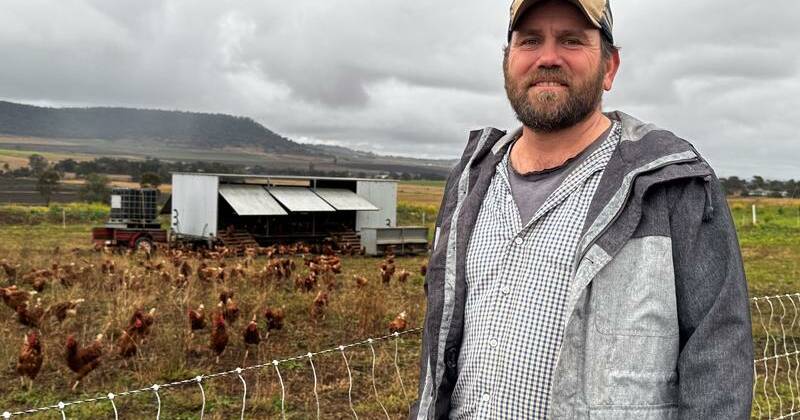
In the picturesque Goomburra Valley of Queensland, Randal Breen is redefining agriculture on his Echo Valley Farm. With thousands of chickens trailing behind grazing cattle, Breen is committed to a model of farming that prioritizes land care over commodification. By integrating livestock into the natural cycle, Breen and his wife Juanita have created a regenerative agriculture system that avoids synthetic fertilizers, focusing instead on natural processes.
“They’ve become our sanitation and fertilization program,” Breen explains, referring to his 3,500 chickens. “We’re using livestock as a tool to heal the landscape rather than extract from it.” This philosophy is encapsulated in their motto, “it’s not the cow, it’s the how,” emphasizing the method of farming over the livestock itself.
Regenerative Agriculture: A New Approach
Echo Valley Farm’s approach is part of a broader movement towards regenerative agriculture, which seeks to restore soil health and biodiversity. The Breens’ method involves strategic livestock movement to allow pastures to recover, enhancing soil nutrients and ecosystem health. This not only benefits the environment but also produces nutrient-rich food.
The Breens operate a subscription service, delivering beef and eggs to local consumers. This model connects the community with the rhythms of farming, offering insights into the seasonal nature of food production. “When you set productivity as the driver, the environment, people, community, and animals all suffer,” Breen notes. “But when we prioritize those things, productivity is the end result.”
National Food Security Strategy: Balancing Priorities
The Australian federal government is currently developing a food security strategy, with productivity and economic growth as key priorities. This has sparked concern among regenerative farmers, scientists, and conservationists who fear that economic considerations might overshadow environmental and public health needs.
The National Farmers’ Federation supports the strategy, emphasizing the importance of secure supply chains and strategic investment to reach a $100 billion agricultural industry by 2030. However, critics argue that focusing solely on economic metrics ignores the complexities of the food system, including health, nutrition, and climate change.
“Australian agriculture has the potential to be a $100 billion industry by 2030, but we need secure supply chains and strategic investment to get there,” said David Jochinke, President of the National Farmers’ Federation.
Health and Nutrition: Central to Food Policy
Public health nutritionist Katherine Kent argues that people should be at the heart of food policy. In 2023, 1.3 million Australians experienced food insecurity, defined as anxiety about affording groceries, lack of access to healthy options, or skipping meals due to economic pressures. Vulnerable groups include those in remote areas, single-parent households, and older Australians.
Dr. Kent emphasizes that food insecurity is linked to broader social determinants of health, leading to mental health issues and chronic conditions. “Food insecurity is not about food production, it’s about the economic access to food and the social barriers that stop people from putting enough healthy food on the table,” she says.
“We have a problem with the social determinants of health in this country, so the people who are most disadvantaged are experiencing the worst health outcomes,” Dr. Kent explains.
Looking Ahead: Policy Implications and Community Involvement
The government’s discussion paper acknowledges the importance of food security and looks beyond agriculture’s scope. However, Dr. Kent warns that framing the strategy around productivity risks public health. “The government needs to start to take this seriously so that people have the choice and the agency in making healthy food choices,” she asserts.
Nathaniel Pelle, an advocate for sustainable food systems, echoes this sentiment. “Productivity and economic growth should only be priorities to the extent that they support the real goal, which is giving people enough food,” he says. Pelle warns that prioritizing economic growth at the expense of natural resources could undermine future food production.
“If they are achieved by destroying the nature or natural capital that the food industry requires, then from a long-term point-of-view, that leads to future losses of productivity,” Pelle cautions.
As the government seeks input from various stakeholders, including farmers and regional communities, the deadline for submissions on the discussion paper is set for October 1. The outcome will shape Australia’s approach to food security, balancing economic, environmental, and social priorities.






